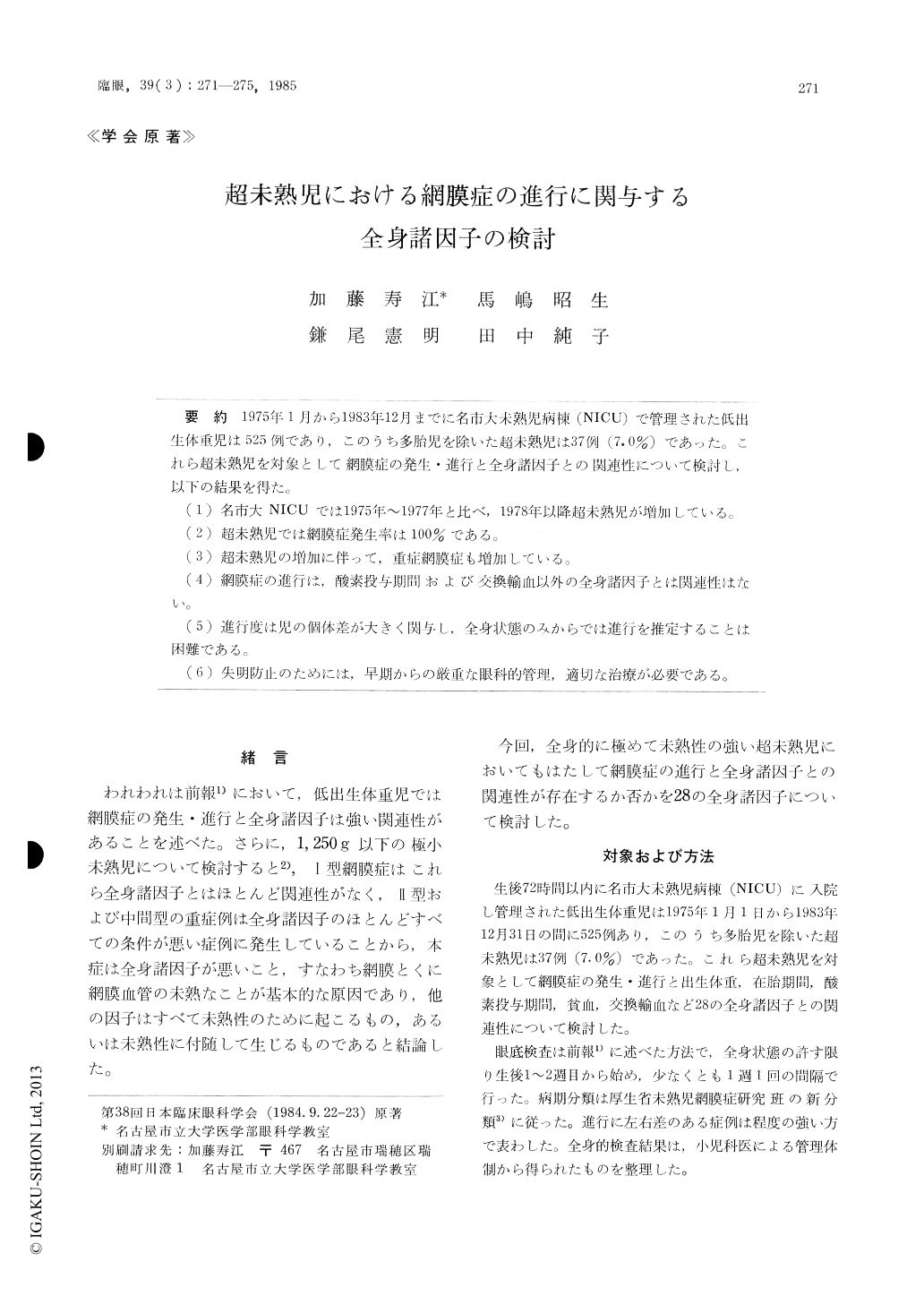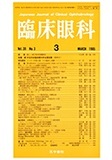Japanese
English
- 有料閲覧
- Abstract 文献概要
- 1ページ目 Look Inside
1975年1月から1983年12月までに名市大末熟児病棟(NICU)で管理された低出生体重児は525例であり,このうち多胎児を除いた超未熟児は37例(7.0%)であった.これら超未熟児を対象として網膜症の発生・進行と全身諸因子との関連性について検討し,以下の結果を得た.
(1)名市大NICUでは1975年〜1977年と比べ,1978年以降超未熟児が増加している.
(2)超未熟児では網膜症発生率は100%である.
(3)超未熟児の増加に伴って,重症網膜症も増加している.
(4)網膜症の進行は,酸素投与期間および交換輸血以外の全身諸因子とは関連性はない.
(5)進行度は児の個体差が大きく関与し,全身状態のみからでは進行を推定することは困難である.
(6)失明防止のためには,早期からの厳重な眼科的管理,適切な治療が必要である.
We evaluated the systemic and ophthalmological aspects of 37 extreme premature infants with birth-weight of 1,000g or less. These 37 cases were seen among a series of 525 low birthweight infants ad-mitted to the neonatal care unit of our hospital during the foregoing 9 years (1975-1983).
There was a significant increase in the incidence of extreme premature infants since 1978. Ret-inopathy of prematurity (ROP) developed in all the 37 cases, of which the ROP was of Type II or Intermediate Type in 14 cases (38%).
We evaluated a total of 28 risk factors which might influence the occurrence and progression of ROP in these 37 cases. The duration of oxygen administra-tion and exchange blood transfusion were significant factors for the progression of Type II or Interme-diate Type of ROP. Other factors, including birth-weight, gestational period, PaO2 values, idiopathic respiratory distress syndrome and severity of anemia, were not significant.
Detailed and repeated ophthalmological care is essential in the early detection and management of ROP in order to prevent visual impairment.

Copyright © 1985, Igaku-Shoin Ltd. All rights reserved.


